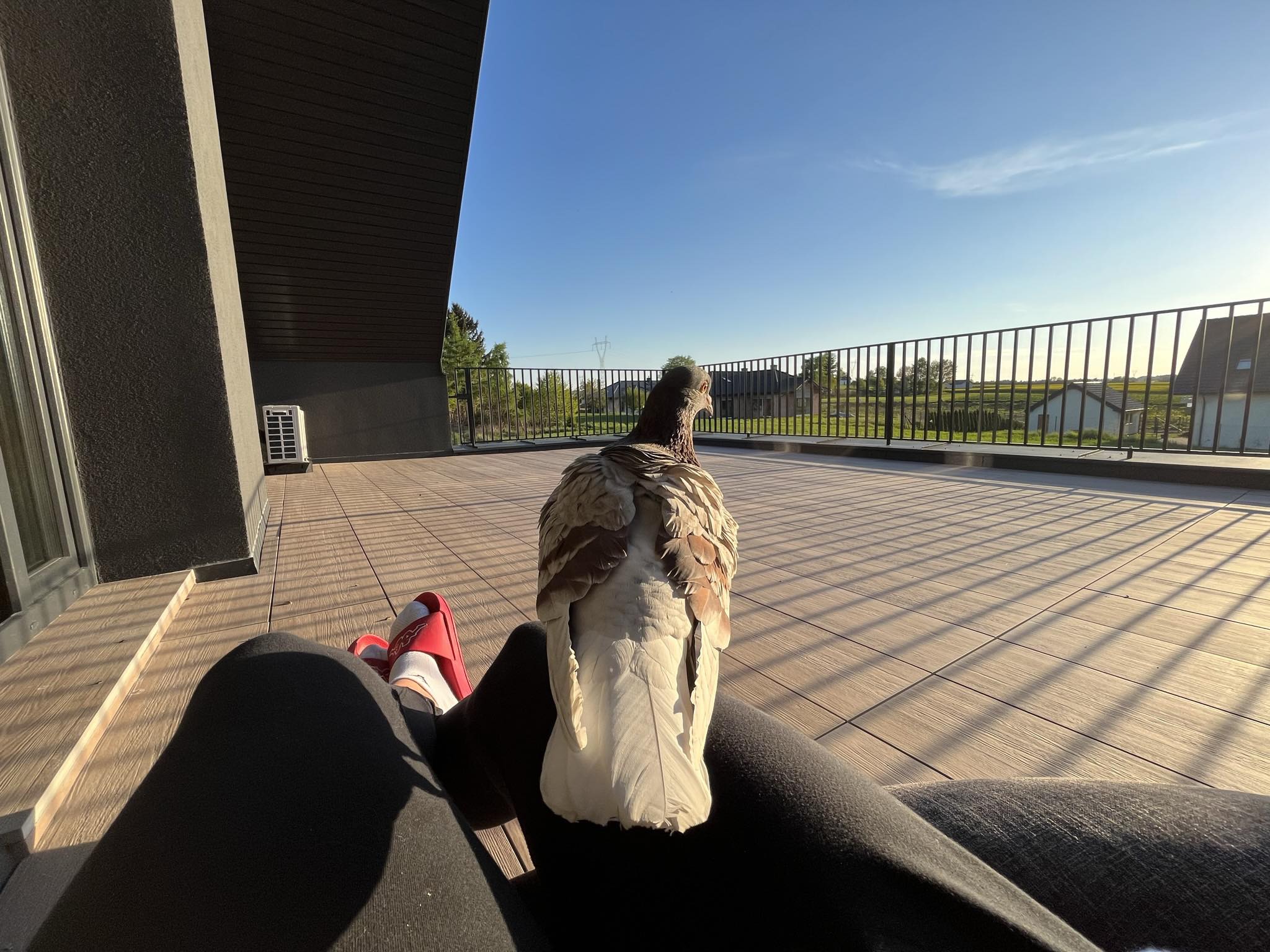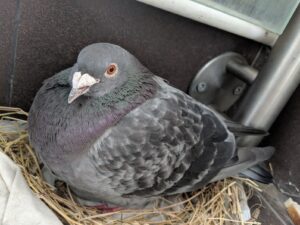Pigeons might be just city-dwellers to some people, but did you know these birds have been secret agents and lifesavers throughout history? Messenger pigeons, known as homing pigeons, have a rich history and have been a crucial part of various civilizations. They were the earliest mail carriers, delivering important messages across vast distances.
Imagine sending a pigeon and it finds its way home over hundreds, or even thousands, of miles! Now that’s something intriguing. Many of us wonder how these pigeons found their way back home. This very aspect of their nature makes pigeons not just fascinating, but also very important to study and understand. So, let’s dive into the amazing world of messenger pigeons and their incredible homing abilities.
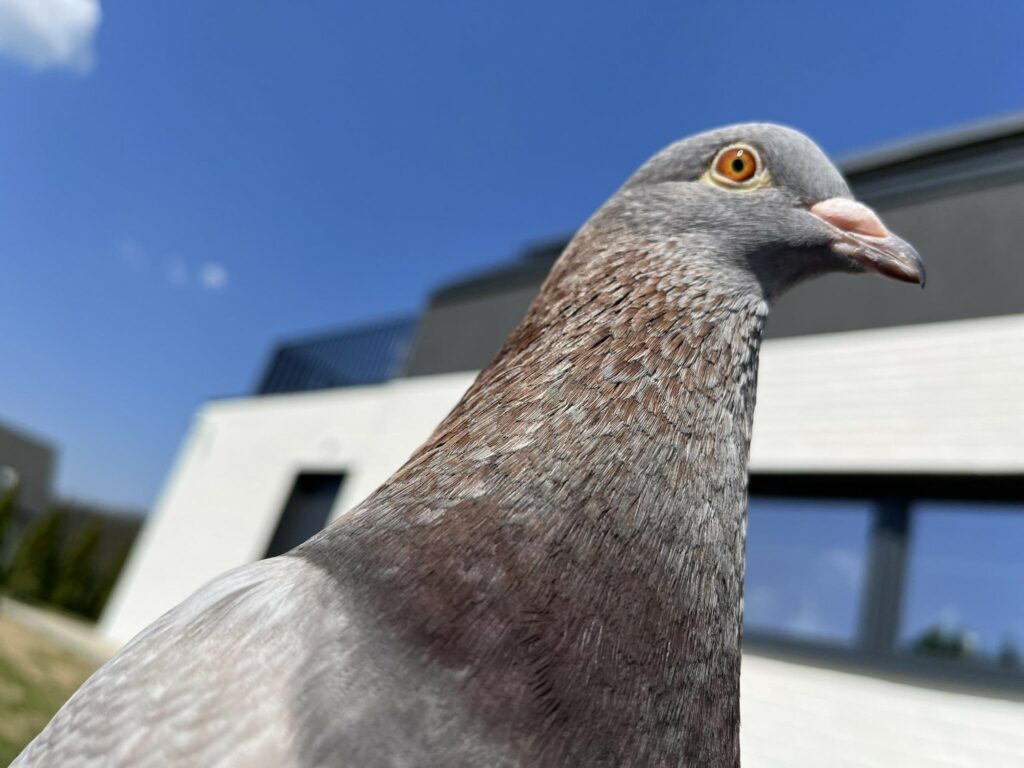
How Did Messenger Pigeons Know Where to Go?
How Did Messenger Pigeons Know Where to Go? Description of Pigeons
Pigeons are medium-sized birds with compact bodies, short legs, and stout bills. They can vary in color, but most often have a grey-blue coloration. They are known for their cooing sounds and their swift flight.
Natural Habitat and Lifestyle
These birds are found all around the world, primarily in urban areas, but they can also live in various other habitats, including forests and deserts. Pigeons are very adaptable and tend to eat seeds, fruits, and sometimes insects.
Homing Abilities of Pigeons
Pigeons aren’t just ordinary birds; they’re fantastic navigators too. They possess an extraordinary homing ability, which means they can find their way home over incredibly long distances. This skill has been used throughout history for message delivery, making pigeons indispensable in times when immediate communication was critical.
Check my article about Do Pigeons Fly At Night?
Understanding Homing Pigeons
Homing pigeons are a wonder of the natural world, displaying navigation skills that have baffled and amazed humans for centuries. In this section, we’ll delve into what sets these extraordinary birds apart, their unique traits, and the historical importance of their incredible homing ability. Prepare to be amazed by the world of homing pigeons!
Definition of a Homing Pigeon
A homing pigeon is not just any ordinary bird. It’s a specific breed of pigeon, known for its extraordinary ability to find its way back to its home over vast distances. No matter how far these pigeons travel, they possess the uncanny ability to return to their original location. The secret to their navigational success is not entirely understood, but it’s a combination of physical strength, natural instincts, and remarkable sensory perceptions.
Unique Characteristics Compared to Regular Pigeons
While all pigeons have a sense of direction and homing instinct, homing pigeons stand out for their superior navigational skills. They are like the avian versions of compasses, always able to point towards home. These pigeons also display strong fidelity to their home, especially if they have a nest or a mate waiting for them. This bond can drive a homing pigeon to cover thousands of miles just to return home.
Besides their navigational skills, homing pigeons are usually larger and more robust than their city-dwelling cousins. They are bred for endurance and speed, which enables them to cover long distances without tiring.
Brief History of Their Usage in Communication
The history of using homing pigeons as a means of communication stretches back thousands of years. Ancient civilizations, such as the Egyptians, started using them around 5,000 years ago to deliver messages and carry out tasks. The Greeks used them to send news of victories at the Olympic Games. The Romans saw their value too and used them to carry important military information.
Their communication services were not limited to ancient times, though. In the age of modern warfare during World Wars I and II, homing pigeons played a critical role. They delivered crucial messages across enemy lines, saving countless lives in the process. They were often the only means of communication in dire situations, and their contribution to the war effort earned them the nickname “war pigeons”.
So, before the advent of telephones and the internet, homing pigeons were a reliable, secure, and fast method of communication. The incredible journeys these birds undertook are a testament to their remarkable abilities and resilience.
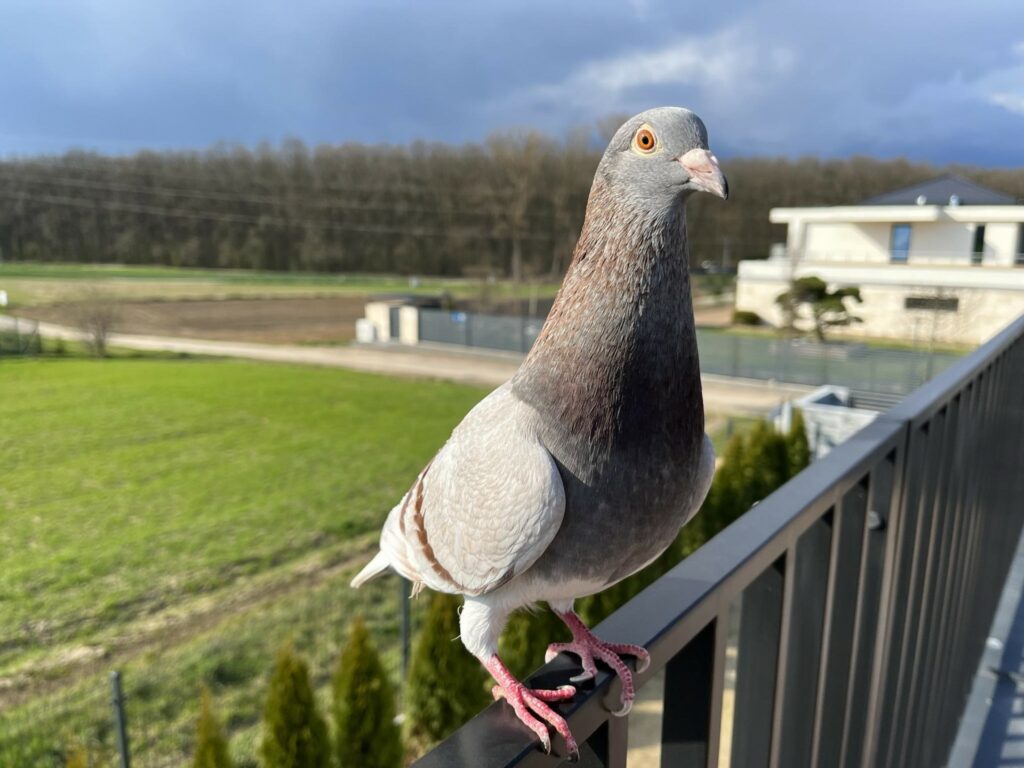
Science of Homing in Pigeons
Pigeons finding their way home is nothing short of a marvel. But what’s the science behind this remarkable ability? In this section, we’ll delve into the fascinating theories and studies that attempt to explain how these birds navigate the world. Prepare for a journey into the intriguing science of pigeon navigation!
Explanation of the Homing Process
The homing process of pigeons is like a super GPS. When a pigeon is taken away from its home and released, it will circle around in the sky for a bit, then suddenly head straight home. It’s like they have an invisible map and compass in their brain that guides them back to their home, no matter how far away they are.
Scientific Theories Behind Homing
There are several theories scientists have come up with to explain how pigeons manage this feat:
- Magnetoreception: Some scientists believe pigeons use the Earth’s magnetic field to find their way. This is because pigeons have tiny magnetic particles in their beaks that help them sense these fields and use them for navigation.
- Sun Compass: Another theory is that pigeons use the position of the sun in the sky as a compass. Like ancient sailors, they can tell the direction based on the time of day and the sun’s location.
- Olfactory Cues/Smell: Some researchers think pigeons use their strong sense of smell to find their way. They create a “smell map” of the area around their home and use this to guide them back.
- Visual Landscape Recognition: Finally, it’s also suggested that pigeons use landmarks to navigate. They remember the look of their surroundings and use these visual cues to find their way home.
Relevant Scientific Studies and Findings
There have been many scientific studies trying to understand pigeon navigation. For example, a study in 2004 found that homing pigeons have a strong reliance on their sense of smell for navigation. When their sense of smell was disrupted, the pigeons struggled to navigate their way home.
Another study in 2013 provided evidence that pigeons use low-frequency sound waves to navigate. This study suggested that pigeons listen to these sounds to create a sound map of their home area, which they use to guide them back.
In conclusion, while there is no definite answer, it’s likely that pigeons use a combination of these methods to find their way home. They’re truly remarkable creatures with abilities far beyond what we once imagined.
Check my article about How Do Pigeons Know Where To Go?
How Did Messenger Pigeons Know Where to Go? Training of Messenger Pigeons
While pigeons have innate homing abilities, training plays a crucial role in honing these skills, especially for longer distances. So, how does one train a pigeon to become a messenger or a racer? In this section, we’ll explore the fascinating process of training these birds, from historical methods to modern techniques, and the importance of the bond between the pigeon and its handler. Let’s unravel the secrets of training these feathered navigators!
Historical Training Process
Historically, the training process of messenger pigeons was simple but effective. Here are the general steps that were followed:
- The pigeon was first allowed to establish a ‘home’ – usually a comfortable loft or cage. This was where it formed a bond, usually with a mate or offspring.
- Once it was comfortable with its home, the pigeon was taken out for short trips, only a few miles away. It was then released and naturally, the bird would fly back home.
- These trips were gradually increased in distance. Over time, the pigeon learned to navigate over longer distances back to its original home.
Check my article about How To Train A Pigeon
Modern Methods of Training
In modern times, the basic training process remains the same, but with a few added measures:
- Electronic rings are sometimes fitted onto the pigeons. These rings record data about the bird’s flight and help trainers understand more about their behavior and performance.
- Along with gradual distance training, birds are also exposed to different weather conditions to prepare them for various scenarios.
Role of the Handler and the Bird’s Bond in Navigation
A pigeon’s handler plays a significant role in its training and successful navigation. The handler provides care, builds trust, and trains the pigeon. This forms a strong bond between the handler and the pigeon, which motivates the bird to return home. If a pigeon has a mate or offspring at home, the urge to return is even stronger. Therefore, the success of a homing pigeon isn’t just about its innate abilities, but also about the relationship it has with its home and handler.
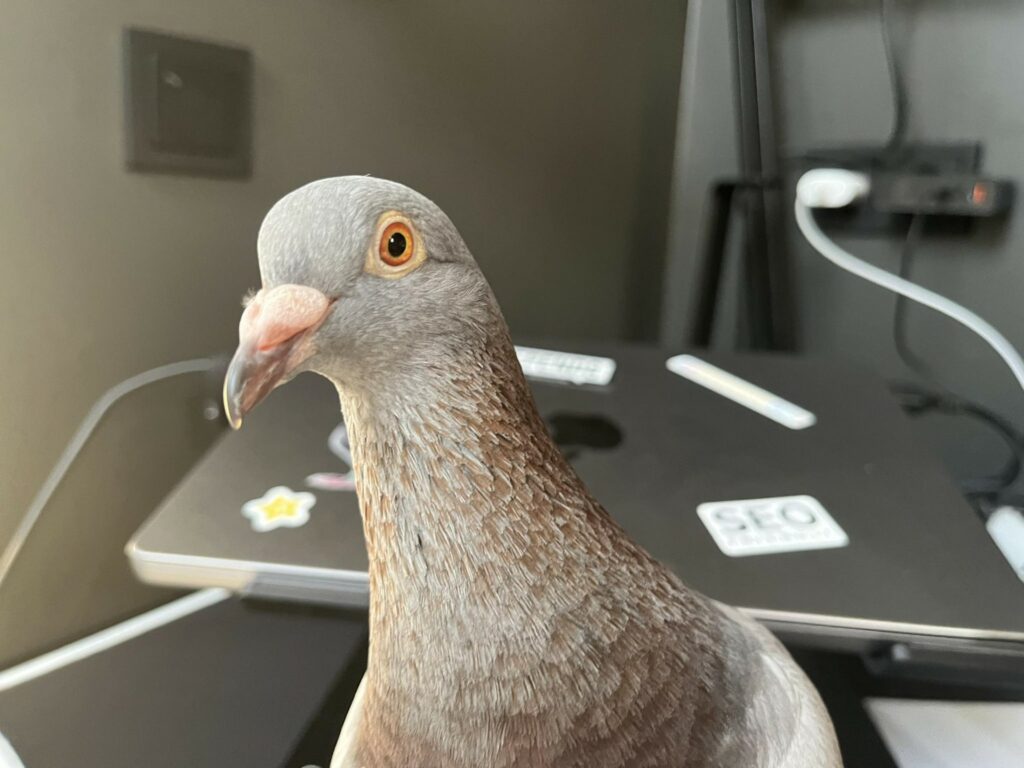
Interesting Cases and Anecdotes
Over the years, the extraordinary abilities of messenger pigeons have led to countless interesting stories and noteworthy instances. These birds have served as unsung heroes in war times and surprised us with their remarkable navigational skills. In this section, we’ll look at some famous instances where these feathered messengers played crucial roles, along with some unusual tales that highlight their fascinating abilities. Let’s dive into the captivating world of pigeon anecdotes!
Famous Instances Where Messenger Pigeons Played a Crucial Role
Messenger pigeons have played some vital roles in history. Here are a couple of famous examples:
- During World War I, a pigeon named Cher Ami saved 194 American soldiers. She was sent with a message about their location and despite being seriously injured, she made it to her destination, saving those soldiers from friendly fire.
- G.I. Joe, another heroic pigeon, played a significant role during World War II. The pigeon covered a distance of 20 miles in just 20 minutes with a crucial message, preventing a planned bombing and saving the lives of at least 100 Allied soldiers.
Unusual or Surprising Stories Related to Their Navigation Abilities
Pigeons’ incredible navigation abilities have led to some truly surprising stories:
- In 2013, a racing pigeon named Bolt (after Usain Bolt), was sold for a whopping $400,000 due to his exceptional speed and homing abilities, proving the value of these traits.
- In an experimental test, scientists in the UK found that pigeons didn’t just rely on one method of navigation. When their sense of smell was impaired, they switched to using their visual memory, showcasing their versatile navigation abilities.
How Did Messenger Pigeons Know Where to Go? Final Thoughts
As we wrap up our exploration of messenger pigeons and their astonishing navigational abilities, it’s clear these birds are much more than the common city dwellers we often perceive them to be. They’ve been instrumental in our history, served as life-saving messengers during wars, and continue to mystify scientists with their homing capabilities.
Their ability to traverse vast distances to find their way home is not just impressive, but a testament to nature’s incredible design. While science has made significant strides in unraveling the secrets of their navigation, there’s still much to discover.
Moreover, the role of human trainers in honing these innate abilities underlines a unique human-animal bond, proving that we’ve been relying on and learning from the animal kingdom far longer than we realize.
From ancient Egypt to modern-day pigeon racing, these feathered navigators have had a long, rich, and often surprising history. Next time you see a pigeon, perhaps you’ll look at them with a new sense of admiration for the incredible journey their ancestors have taken, and the mysteries they continue to hold.
In the end, the world of messenger pigeons is a fascinating reminder of nature’s wonders and the incredible symbiotic relationship between humans and animals. It truly is a journey of discovery that transcends time and continues to fascinate us to this day.
What is a messenger pigeon?
A messenger pigeon, also known as a homing pigeon, is a type of pigeon that has been trained to fly from one location to another, then return to its original location, often over vast distances. They were used historically to carry messages, especially in times of war.
How did messenger pigeons find their way home?
Scientists believe that messenger pigeons use a combination of methods to find their way home, including magnetoreception (using the Earth’s magnetic fields), sun compass (using the sun’s position as a guide), olfactory cues (using smell), and visual landscape recognition (using landmarks).
How were messenger pigeons trained?
Messenger pigeons were trained through a gradual process of increasing distances. Starting from a short distance, the pigeons were released and they would naturally fly back home. The distances were increased over time, improving their navigation skills.
What role did messenger pigeons play in history?
Messenger pigeons have played significant roles in history, especially during World War I and II. They were used to deliver messages across enemy lines, often saving many lives in the process.
Can all pigeons be used as messenger pigeons?
While all pigeons have a sense of direction and homing instinct, homing pigeons, a specific breed of pigeon, have these abilities highly developed. Therefore, not all pigeons can be effectively used as messenger pigeons.
Do pigeons use the Earth’s magnetic field to navigate?
Yes, it’s one of the theories. Some studies suggest that pigeons have tiny magnetic particles in their beaks that help them sense Earth’s magnetic fields and use them for navigation.
Are modern methods used to train pigeons?
Yes, while the basic training process remains the same as in historical times, modern methods involve using electronic rings to track and record data about the bird’s flight and behavior.
How important is the handler’s role in pigeon navigation?
The handler plays a crucial role in training the pigeon and creating a bond with it. This bond is an important motivator for the pigeon to return home, making the handler’s role significant in successful navigation.
Can pigeons navigate if their sense of smell is impaired?
While pigeons do use their sense of smell for navigation, research has shown that if their olfactory sense is impaired, they can switch to using their visual memory for navigation, showcasing their adaptability.
Are there any famous messenger pigeons?
Yes, there are several famous messenger pigeons. During World War I, a pigeon named Cher Ami saved 194 American soldiers by delivering a crucial message, while during World War II, a pigeon named G.I. Joe saved at least 100 Allied soldiers by delivering an important message in time.

